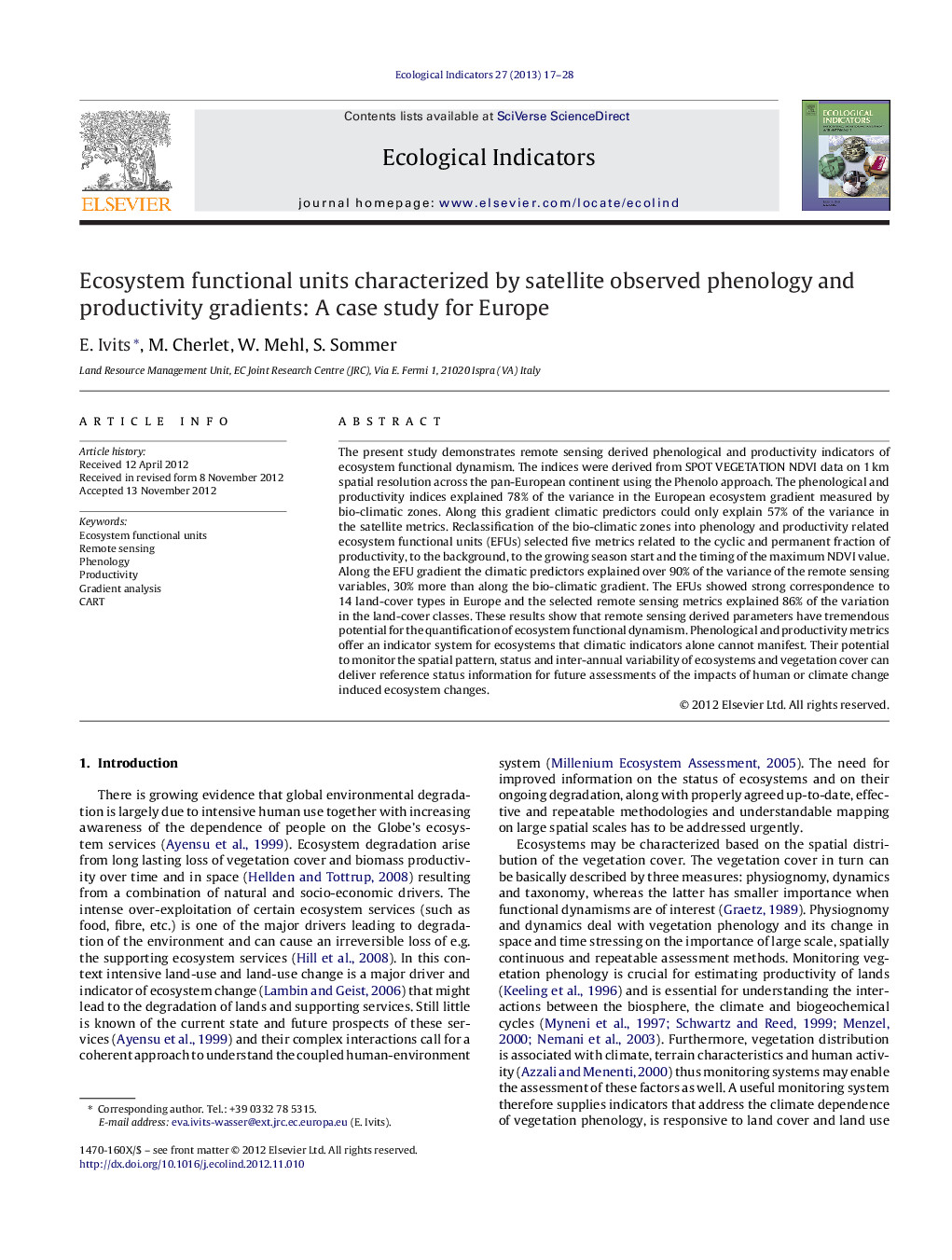| کد مقاله | کد نشریه | سال انتشار | مقاله انگلیسی | نسخه تمام متن |
|---|---|---|---|---|
| 4373515 | 1617173 | 2013 | 12 صفحه PDF | دانلود رایگان |

The present study demonstrates remote sensing derived phenological and productivity indicators of ecosystem functional dynamism. The indices were derived from SPOT VEGETATION NDVI data on 1 km spatial resolution across the pan-European continent using the Phenolo approach. The phenological and productivity indices explained 78% of the variance in the European ecosystem gradient measured by bio-climatic zones. Along this gradient climatic predictors could only explain 57% of the variance in the satellite metrics. Reclassification of the bio-climatic zones into phenology and productivity related ecosystem functional units (EFUs) selected five metrics related to the cyclic and permanent fraction of productivity, to the background, to the growing season start and the timing of the maximum NDVI value. Along the EFU gradient the climatic predictors explained over 90% of the variance of the remote sensing variables, 30% more than along the bio-climatic gradient. The EFUs showed strong correspondence to 14 land-cover types in Europe and the selected remote sensing metrics explained 86% of the variation in the land-cover classes. These results show that remote sensing derived parameters have tremendous potential for the quantification of ecosystem functional dynamism. Phenological and productivity metrics offer an indicator system for ecosystems that climatic indicators alone cannot manifest. Their potential to monitor the spatial pattern, status and inter-annual variability of ecosystems and vegetation cover can deliver reference status information for future assessments of the impacts of human or climate change induced ecosystem changes.
.Figure optionsDownload as PowerPoint slideHighlights
► We present phenological indicators for functional classification of ecosystems.
► The remotely sensed indicators explained 78% of the European ecosystem gradient.
► Phenological indicators explained 43% of the variance that climate could not.
► Phenological classification of ecosystems explained 86% variation in land cover.
► The indicators have great importance in monitoring status and change of ecosystems.
Journal: Ecological Indicators - Volume 27, April 2013, Pages 17–28